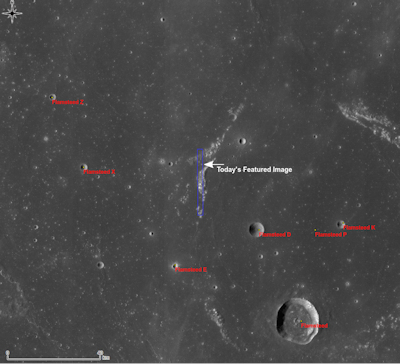This Week in SpaceWeekly: Jellyfish Clouds, Lunar Craters & Solar Flares
This Week in SpaceWeekly: A stunning display of sky science lit up the West Coast when a Falcon 9 rocket painted the twilight with a jellyfish-shaped cloud, dazzling viewers and camera lenses alike. As spectators marveled from Earth, NASA’s Lunar Reconnaissance Orbiter (LRO) revealed fresh impact craters on the Moon – evidence that the lunar surface is far from static.
At the same time, the Sun flexed its magnetic muscles with two powerful X-class solar flares, briefly disrupting radio communications and hinting at the growing intensity of Solar Cycle 25. In orbit, the Axiom‑4 mission successfully launched with a crew of four, including astronauts from India, Poland, and Hungary. Meanwhile, China’s Tianwen‑2 probe began its ambitious deep‑space trek.
From breathtaking sky events to cutting‑edge missions, the past week showed off the thrilling unpredictability of space science. Whether you’re watching the heavens or decoding data from a probe, there’s no shortage of cosmic activity to explore – and SpaceWeekly is here to bring it to you with clarity and spark.
💡 Jellyfish Cloud Illuminates West Coast Skies

On June 16, a Falcon 9 rocket carrying 26 Starlink satellites lifted off from Vandenberg Space Force Base. Minutes later, observers across Southern California witnessed the rocket’s exhaust plume glowing like a jellyfish against the twilight sky. AccuWeather
This optical phenomenon occurs when rocket emissions rise into sunlight above the dark horizon – no special equipment required, just the right timing and atmospheric conditions.
The brief spectacle reminded thousands that orbital launches often offer unintended celestial art – nature meeting engineering in sky‑high style.
🌋 LRO Reveals Fresh Lunar Crater

NASA’s Lunar Reconnaissance Orbiter (LRO) captured detailed images of a recently formed crater on the Moon’s Oceanus Procellarum with bright ejecta rays and a sharp rim. Researchers believe this impact occurred within the past few years. NASA/JPL Photojournal
The sharp contrast between the fresh crater and its surroundings lets scientists pinpoint the timing of recent meteoroid strikes – improving our understanding of lunar surface evolution.
Monitoring these fresh sites aids mission planners in assessing surface conditions for future landers and habitats by refining impact risk models.
🌞 Double X-Class Solar Flares Disrupt Communications
The Sun unleashed two X-class solar flares on June 17 and 19 – the strongest category of solar storms – with the June 19 event reaching X1.9 intensity and triggering brief radio blackouts over North America. Beaumont Enterprise
These flares disturbed the ionosphere, interrupting GPS and short‑wave radio systems, while also setting the stage for potential auroras at lower latitudes.
As Solar Cycle 25 continues to ramp up, more geomagnetic activity is expected – highlighting the importance of monitoring space weather for satellites, aviation, and power grids.
🛫 Axiom‑4 Launches Private Crew to ISS
On June 25, the Axiom‑4 (Ax‑4) mission launched aboard a SpaceX Falcon 9 rocket carrying the Crew Dragon spacecraft named “Grace” from Kennedy Space Center’s Launch Complex 39A. The four‑person crew included commander Peggy Whitson, pilot Shubhanshu Shukla of the Indian Space Research Organisation (ISRO), and mission specialists Sławosz Uznański‑Wiśniewski of Poland and Tibor Kapu of Hungary. Reuters
Ax‑4 marks the first time astronauts from India, Poland and Hungary have flown to the International Space Station (ISS) and represents a milestone in international commercial spaceflight. After a 28‑hour rendezvous, Dragon “Grace” docked at the ISS Harmony module on June 26 to begin a multi‑week mission featuring microgravity experiments. NASA
NASA celebrates this as a stride forward in commercial crew capabilities and global cooperation in low Earth orbit. The Ax‑4 mission reinforces Axiom Space’s expanding role in private space access and highlights the growing importance of inclusive international missions. Space.com
🚀 China Launches Tianwen‑2 on Dual Mission
On June 28, China launched its Tianwen‑2 probe toward near‑Earth asteroid 469219 Kamoʻoalewa, with plans to collect surface samples before heading to main‑belt comet 311P/PANSTARRS. Wikipedia: 2025 in spaceflight
Equipped with advanced sampling technology – including touch‑and‑go and anchor‑and‑attach mechanisms – the mission aims to return asteroid material in 2027 and study comet dust and gas later on.
This dual‑target expedition marks a first in deep‑space robotics and reinforces China’s growing prowess in sample‑return and planetary science.
🔭 Skywatching This Week
- – June 27 – New Moon & Mercury: Spot the Moon near Mercury after sunset. Space.com
- – June 27 – Polaris at Zenith: The North Star’s highest point tonight. Astronomy.com
- – June 28 – Venus & Saturn low in the evening sky; look west about one hour after sunset. NASA
- – June 29 – Mars at opposition: the Red Planet reaches its brightest point this summer. Space.com
- – June 30 – Comet C/2023 A3 (Tsuchinshan) may be visible low in the eastern sky before dawn. Sky & Telescope
- – July 1 – Look for the International Space Station crossing early in the night sky. NASA Spot the Station